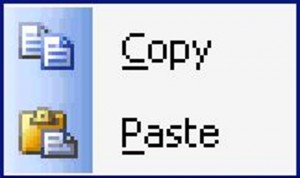Posted on May 14, 2012 by Stephan Wiedner
Here at Noomii, our number one goal is to match coaching clients with the best possible coaches for their specific needs. Not only do clients benefit by getting the best fit for them, but coaches benefit for the same reason.
Sadly, we don’t always supply clients with the best possible coaches because the request is very specific, and we may not have a coach in our network who meets their exact requirements. But most of the time it’s because coaches are bidding on the wrong client, or they’re not presenting themselves in a way that compels the client to contact them. So today we’re going to highlight four of the most common mistakes that you may have made when bidding on client leads, and how to avoid them.
1. You recommend yourself to clients in faraway cities

It’s tempting to recommend yourself for clients that are in different states and countries. When I first started out as a coach, I wanted to have an “international†business and sought clients all over the globe. I certainly did not want to limit myself to working only with clients in my city.
Unfortunately, this is not how most clients think. The truth is, the majority of clients seeking a coach on Noomii prefer a coach in their city or at least the general region (e.g. New England or Southern California). Here’s why. Most clients that arrive on Noomii have Googled a geographically based search term such as “life coach Chicagoâ€Â, “life coach NYCâ€Â, or “life coach san francisco“. And just as you wouldn’t think to hire a doctor, lawyer, or dentist in a faraway city, most prospective clients assume their coach will be someone local.
Even after we explain that they should choose fit over proximity, the client’s expectation is that there will be a coach in their area that can help them. We regularly hear from clients who are perplexed to see that three or four of the coaches that responded to their request live outside of their state, in different timezones, and in some cases, out of the country.
We know that a lot of coaching happens on the phone and that some coaches have international clientele but based on the way Noomii generates client leads, our visitors are biased toward hiring a local coach. Don’t bother responding to clients that are far away from you unless you satisfy a very specific need. You won’t get the call and you’ll be wasting your money.
2. Recommending yourself to clients who don’t match your profile
In theory, coaches can work with anybody because they do not require domain specific knowledge. In practice, it’s not true.
Plenty of research in other domains, namely therapy, strongly suggests that the objective, measurable benefits derived by clients is largely influenced by how good they think the practitioner is. It’s a fulfilling prophecy. If the client thinks you’re amazing, they’ll get amazing results.
When clients submit their information to Noomii, they want to see coaches who offer a service that matches their needs. For example, if an entrepreneur is looking for business coaching, they want to see a list of business coaches, not a list of life coaches. If you are a life coach, maybe you can legitimately help a business client because at the core, life coaching and business coaching are the same. But the client doesn’t know that. They want to see consistency between their request, your personalized message, your profile, and even your website. Everything needs to be in alignment otherwise they will go to the next coach a click away or worse, abandon their search altogether.
In the short term, you may secure one or two clients by recommending yourself to as many client leads as possible regardless of what the client is looking for, but in the long run, it’s not going to pay off and it may even hurt the chances of other coaches.
3. Writing a “cut-and-paste†personalized message
Coaches are really good at connecting with people on a personal level. In order to save time responding to client leads, some coaches opt to copy and paste the same template response to every client lead that passes through Noomii. It’s not effective.
When clients hire a coach, they are drawn to coaches that “get them†and the inauthenticity of template responses can be detected a mile away. If you’ve ever hired a freelancer or employee, you’ve probably experienced what it’s like to have people put in no effort to address you personally. The ones that do stand head and shoulders above the rest.
If you are going to respond to client leads, try to identify something that you can say to relate to them on a personal level. The latter half of your message can be template text but the first sentence, at the minimum, needs to speak directly to the client.
4. Giving up too early
Securing paying clients on Noomii can take time. The potential for a positive return on investment is there, you just have to stick with it. The average paying client can easily pay for Noomii for an entire year. If you get three or four clients, you’re laughing all the way to the bank. You just can’t give up that easily.
In the world of marketing, everything is a game of numbers. A typical sales funnel will have 3 or 4 steps and it’s obvious that not everyone will get to the bottom of the funnel, to the step at which they whip out their credit card. For example, if you blog regularly, you may have a 1000 newsletter subscribers. 500 of them may read any given newsletter. 100 of them may inquire into your latest promotion. 10 of them may take you up on a sample session. And 3 of them may hire you.
Maybe you can increase conversion rates at every step along the way, but you’ll never get 100% conversion at each step. If you do, you will be very successful and please send me a copy of your book.
The same mindset and understanding of the numbers applies to Noomii. Not all client leads will convert. It’s just a fact. But if you hang in there, continue to refine your message, and respond to more and more client leads, you’ll eventually get the return you are looking for.
Also, some clients take a long time to convert. The most extreme case responded to their recommended coaches 11 months after the original request.
It can be frustrating when you don’t get a response from a client who appeared to be an excellent fit but if you maintain a long-term mindset and keep the numbers in mind, it’s easier to keep the momentum moving forward.
